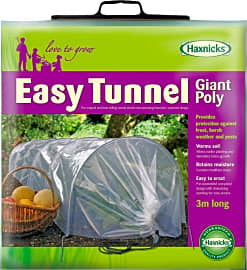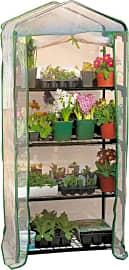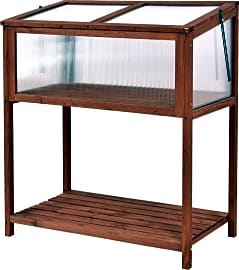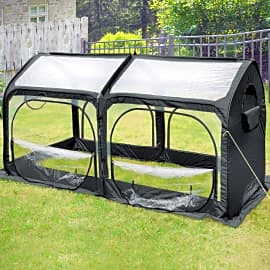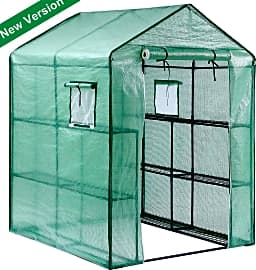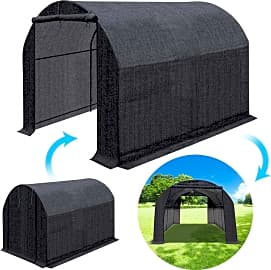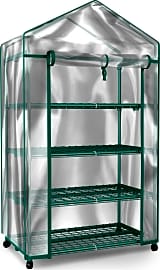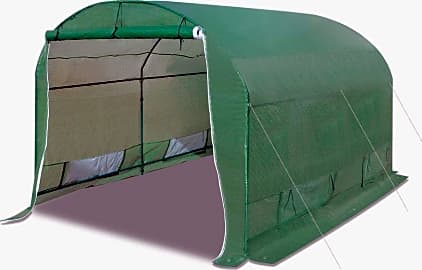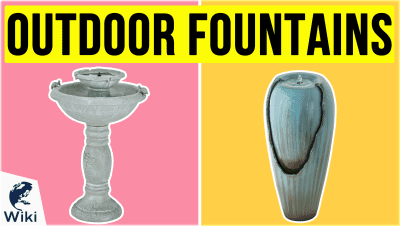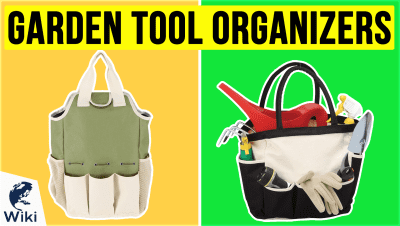The 10 Best Portable Greenhouses

This wiki has been updated 39 times since it was first published in October of 2016. Extend the growing season for all your plants, flowers, vegetables, and fruit with one of these portable greenhouses, while also protecting them from pests. They are available in a wide range of sizes, from small to meet the needs of patio and balcony gardeners, to large models for big back yards. You'll never again have to worry about an unexpected frost or harsh sun killing off your hard work. When users buy our independently chosen editorial choices, we may earn commissions to help fund the Wiki.
Editor's Notes
February 24, 2021:
After careful review of the options on the market, we have decided not to make any changes to our recommendations. Not only does our current selection already include a wide variety of styles and sizes, so there is something to meet every need, but we didn't feel there were any others that offered features that aren't already found on the models here nor any that had a notably better build quality. That being said, we will keep an eye on this category, and if the situation changes, we will make the relevant adjustments to our lineup.
September 28, 2019:
It takes a lot to keep greenery healthy, from a good set of garden tools to plenty of fertilizer, but if you're battling the weather, any one of these portable greenhouses will stack the deck in your favor. For small-scale operations, the Gardman R687 Mini and the Flower House Pop-Up remain top choices, since they're easy to set up, relatively sturdy, and simple to reposition and relocate. We also like the Tierra Haxnicks Easy Poly Tunnel as a good choice for those who need to protect rows of outside plants. It's uncomplicated but effective, and since it folds up, you don't need a lot of storage space when it's not in use. For larger needs, we kept the Quictent Pop-Up and Strong Camel Hot Garden House. The latter isn't terribly strong, but for light duty, it should do the trick.
Special Honors
ACF Greenhouses Solar Harvest 7' x 7' It's pricier than much of the competition, but that's because the ACF Greenhouses Solar Harvest 7' x 7' is made to handle inclement weather, including strong winds and snow. It also offers rain water collection capabilities thanks to built-in gutters. acfgreenhouses.com
Eden Mini Greenhouse If you want something small and attractive to grow a few herbs and vegetables or perhaps some flowers all year round, the Eden Mini Greenhouse is a suitable option. It comes as a package with a raised bed that is crafted from North American wood. arbico-organics.com
A Brief History Of Gardening
These early greenhouses were the showplaces of the botanical gardens they served.
The story of gardening is — in a not-so-indirect way — the story of human civilization. Long before people took up writing implements to record the stories of their lives, the archaeological record shows that mankind underwent a pivotal shift from being hunter-gatherers, seeking out food sources in the wild, to the establishment of more permanent settlements. The dawn of civilization is defined by the development of agriculture: the domestication of formerly wild species for human consumption, including the cultivation of edible plants.
Apparently, in the grand scheme of things, it didn't take humans very long to figure out the benefits of taking measures to protect and shelter their newly domesticated crops from elemental extremes. Evidence of flood and fire control can be found in artifacts of the early Neolithic period. And the practice of growing plants under cover dates at least as far back as the days of Ancient Rome, when Emperor Tiberius enjoyed the fruits of a cucumber-like plant so much that his gardeners set up something like primitive hothouses to grow them year-round. Using sheets of selenite, a transparent rock, they built structures to shield the plants against frost without blocking out the sun.
During the Renaissance, the advent of new glassmaking techniques facilitated the building of larger, more sophisticated glass-enclosed structures, and non-native plants brought back from exotic locations by explorers and traders were housed indoors during the cooler months. These early greenhouses were the showplaces of the botanical gardens they served. They were called orangeries, so named for the large citrus trees that were often overwintered there — the most famous of which may be the one built at Versailles. Completed in 1686, the Versailles orangery wasn’t well planned in terms of ideal growing conditions; it faced northwest, let too little sun in, and had an inefficient coal furnace that alternately overheated and froze plants, many of which would scarcely survive till spring.
The abolishment of tariffs on glass windows in the 19th century helped bring about the widespread construction of Victorian glasshouses, where wealthy horticulturalists showcased carefully curated crops of native and exotic fruits, vegetables, and flowers throughout the year. These spectacular structures and botanical displays remain a nostalgic pleasure among modern-day gardening enthusiasts.
Season Extenders And Year-Round Gardening
It’s not difficult to imagine the conditions that encouraged 19th century Europeans to flock to these showy indoor gardens. In spring and summer, one could escape smoggy city centers and harsh working conditions to enjoy some sunshine and fresh breezes among the abundant foliage, aromatic blossoms, and ripening fruits. And in cooler months, the glasshouses’ warmth, verdant plant life, and freshly oxygenated air must have been a welcome reprieve from the wintry chill outdoors, and alternately drafty and stifling conditions in most other buildings.
Many of the original glasshouses no longer exist, but the penchant for using transparent shelter to extend the growing season and enjoy the rejuvenating effects of a thriving garden well beyond their natural parameters hasn’t waned a bit. Innovations such as double- and triple-glazing, as well as the development of composite transparent materials, have facilitated the creation of better insulated, naturally lit growing spaces. Automations that enable gardens to maintain plant-friendly temperatures and adequate ventilation have also helped. And as indoor gardening has become more affordable, the use of budget-friendly greenhouses has proliferated among various levels of society, leading to further innovations as do-it-yourselfers find newer and cheaper means of protecting their plants and keeping a garden throughout the year.
Abundance In Small Spaces
Intriguingly, recent studies suggest that gardening operations could be employed to help rehabilitate convicts and improve the lives of wounded veterans, troubled youth, and other at-risk populations. However, the therapeutic effects of working the soil notwithstanding, not everyone’s living arrangements and local conditions are particularly amenable to traditional gardening. Edible plants, in particular, are vulnerable to frost, infestation, and raiding by uninvited dinner guests. While rural farms and suburban gardeners can use row covers, cloches, and cold frames to prevent inclement weather from destroying their crops, gardening presents a unique set of challenges for city dwellers, for whom keeping a garden could be particularly beneficial.
Edible plants, in particular, are vulnerable to frost, infestation, and raiding by uninvited dinner guests.
Fortunately, as greenhouse technologies have become more affordable, they’ve also grown more adaptable. Polycarbonate sheeting is fairly lightweight and makes an excellent building material for smaller greenhouses. In extreme climates, a well-built polycarbonate shell can protect tender plants in raised beds or containers long enough to extend the harvest, or even overwinter hardy perennials. Geodesic domes, constructed using polycarbonate sheeting, inexpensive insulation materials, and supplies found at a local hardware or home improvement store can often outlast traditional rectangular structures and withstand even harsher conditions. And flexible composites can be used to manufacture pop-up structures that fit over a few containers, around large planters, or even on a modest balcony to enable eager gardeners to get an early start on the growing season.
Given the rise of the locavore, sustainable food production, forest bathing and similar movements focused on reconnecting with our natural environments, the role of greenhouses in gardening isn’t likely to diminish anytime soon. Especially in densely populated urban settings, compact and portable plant shelters make garden-fresh produce more accessible to the masses, which can hardly be a bad thing.


